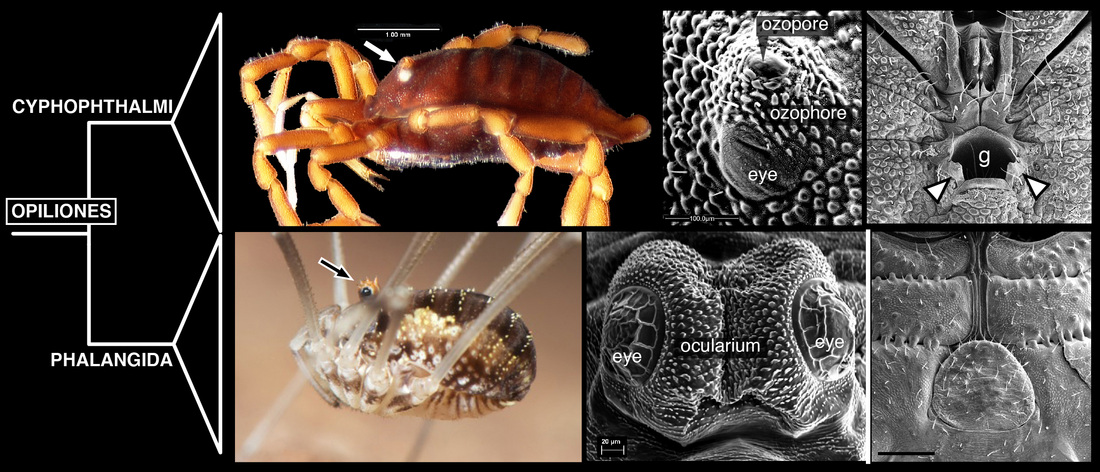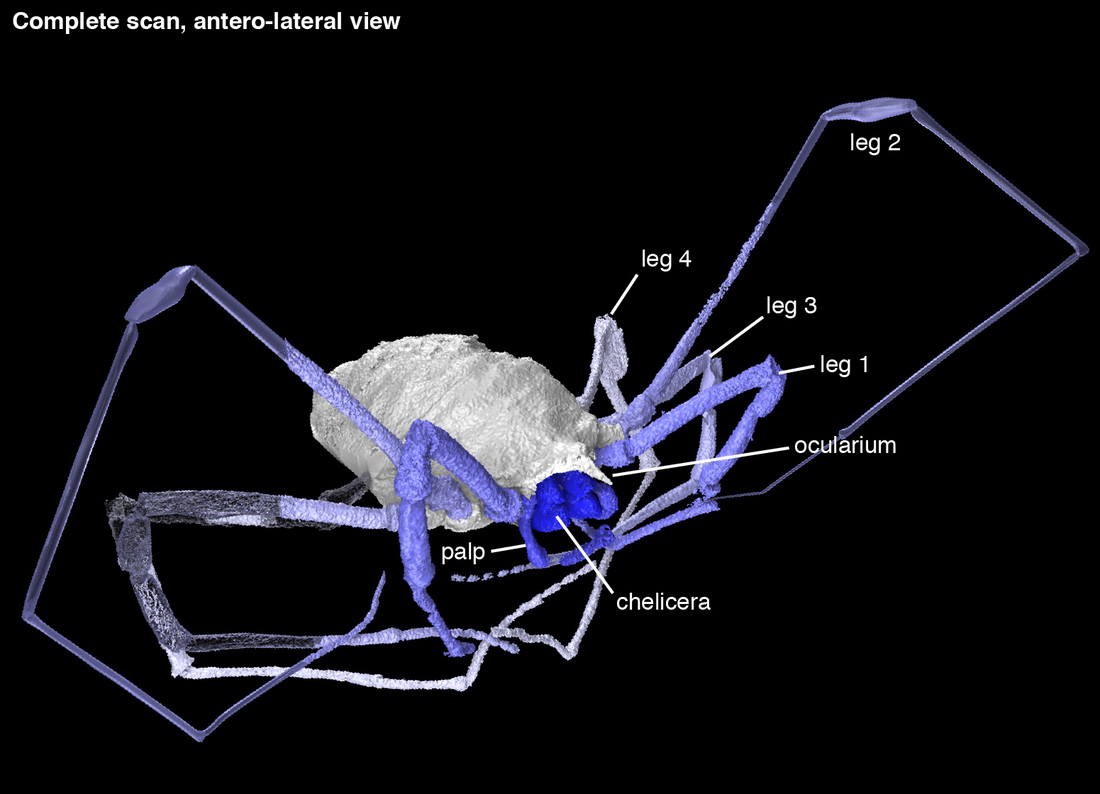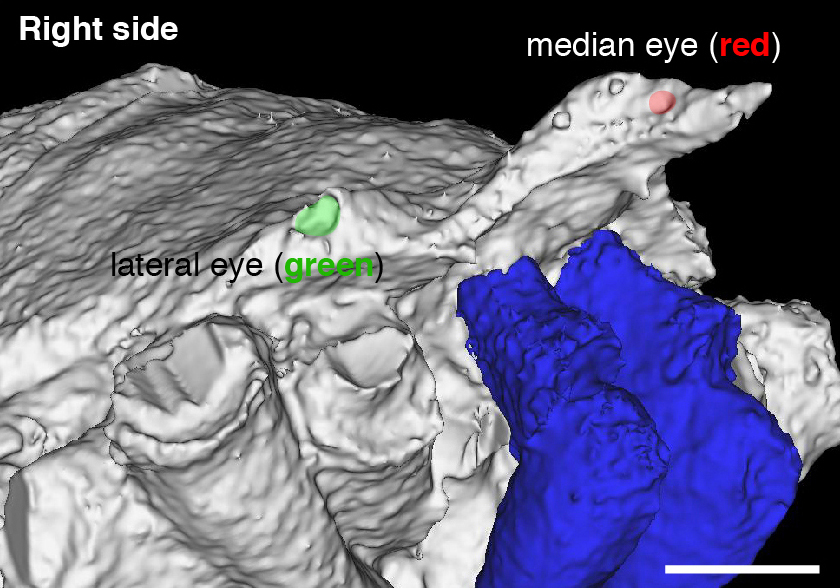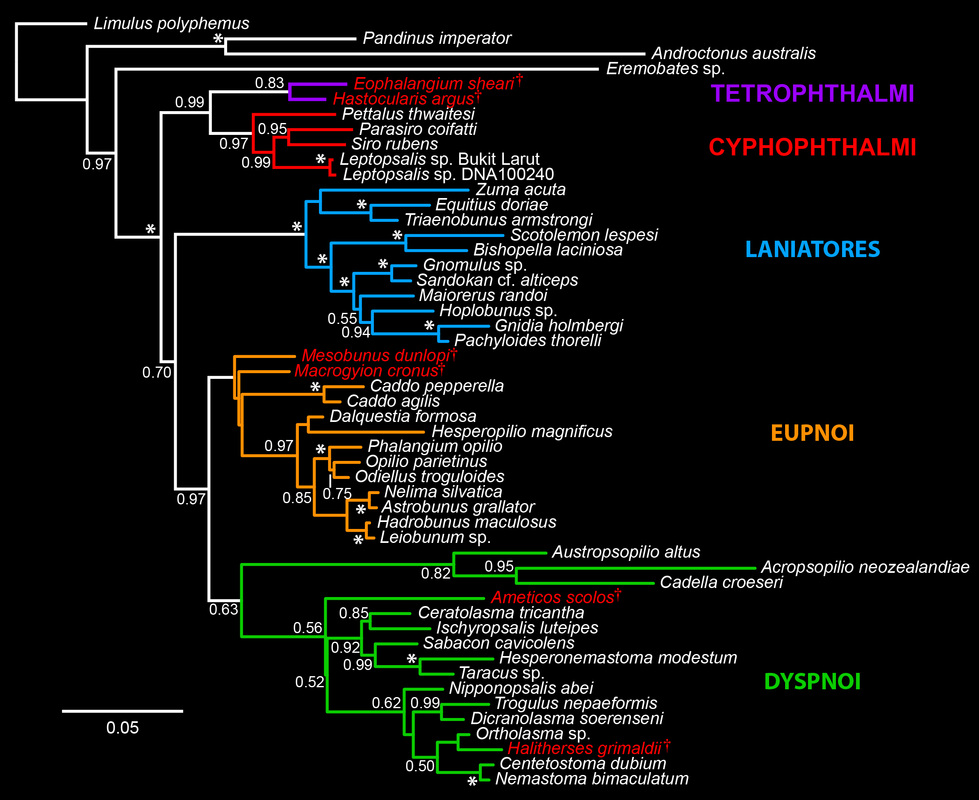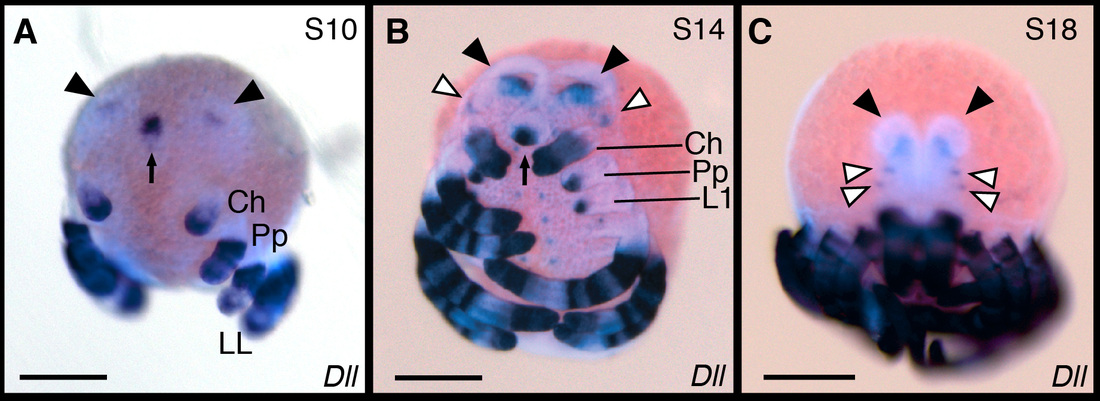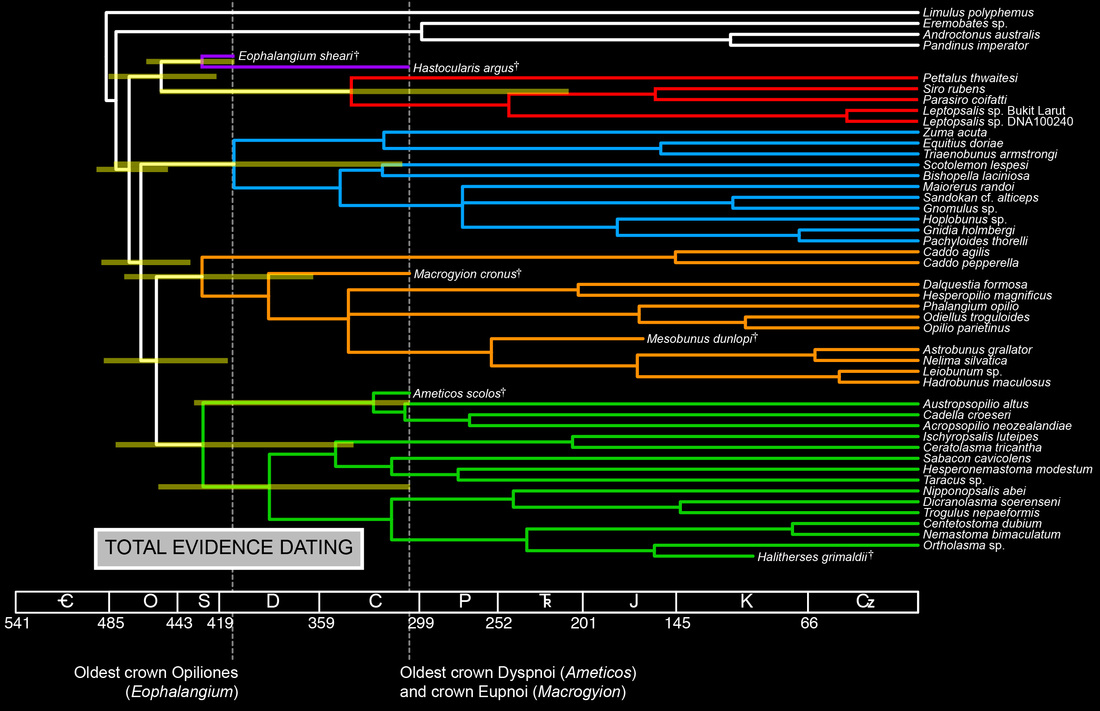Basal Opiliones phylogeny and dating
The basal split in Opiliones phylogeny divides the group in the suborder Cyphopthalmi and the clade Phalangida (the remaining three suborders). These groups are very different in several respects.
Cyphophthalmi (or "mite harvestmen") have a single pair of eyes on the sides of their head (in two families; the rest are completely blind), associated with outgrown structures called ozophores; open gonostomes as adults; and indirect insemination via spermatophores.
Phalangida have a single pair of ocelli (simple eyes), associated with a typically fused outgrowth called the ocularium; an operculum covering the gonostome in adults; and direct insemination via an everted copulatory apparatus in males.
Cyphophthalmi (or "mite harvestmen") have a single pair of eyes on the sides of their head (in two families; the rest are completely blind), associated with outgrown structures called ozophores; open gonostomes as adults; and indirect insemination via spermatophores.
Phalangida have a single pair of ocelli (simple eyes), associated with a typically fused outgrowth called the ocularium; an operculum covering the gonostome in adults; and direct insemination via an everted copulatory apparatus in males.
We recently discovered a Carboniferous fossil harvestman (~305 Myr old) that has evidence of both pairs of eyes. This species, Hastocularis argus, has characteristics intermediate between Cyphophthalmi and Phalangida. It has both ozophores and an ocularium; two pairs of eyes; a complete scutum (body segments inflexibly fused together) like modern Cyphophthalmi; and an eversible copulatory apparatus like modern Phalangida.
The discovery of two pairs of eyes in this fossil indicates that the ancestor of Opiliones bore two sets of eyes, a condition that occurs in modern spiders, scorpions, and horseshoe crabs. It also supports independent origins of the eyes of Cyphophthalmi and the eyes of Phalangida.
A phylogenetic analysis of both morphological and molecular sequence characters reveals that Hastocularis argus and the oldest harvestman fossil, Eophalangium sheari (~410 Myr old) are part of the same group (named suborder Tetrophthalmi) that is sister group to mite harvestmen.
Developmental genetic evidence reveals that embryos of a modern phalangid, Phalangium opilio, express a gene that patterns outgrowths of the body wall very strongly in the site that will form an ocularium (black arrowheads). But transient expression of this gene is also observed in the lateral eye fields, which are interpreted to be vestiges of the ozophores that also occurred in the harvestman ancestor (white arrowheads, middle panel below). For more on developmental genetics of harvestmen, please see the Development and EvoDevo tab.
Together with renewed understanding of Opiliones basal relationships and eye homology in this groups of arachnids, the discovery of Hastocularis argus also changes inferred divergence times for the group. Here we used fossils as included taxa in a total evidence (morphology and molecules) molecular dating analysis.

